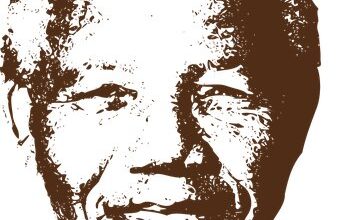Burma-born Chinese-American author and novelist Mingfong Ho’s fiction mostly focuses on realist depictions of the lives of rural populations in Southeast Asia where Ho spent most of her childhood, as well as on the experiences of third-world immigrants in first-world countries. “The Winter Hibiscus” is one such story that describes the struggles of a Laotian immigrant girl, Saeng, to fit in with American society despite being in America for four years and being fluent in English. The story uses the third-person limited narrative technique.
The Winter Hibiscus | Summary
The story opens with an image of the sixteen-year-old Saeng standing in front of an open doorway on an October morning, the chilly Fall wind rustling the beautiful red maple leaves around her legs. She is fascinated by maple leaves, and the previous year she had collected so many between the pages of her algebra book that even her professor had noticed and advised her to transfer them to another book, resulting in her casually leaving the leaves lying around until they rotted, which she remembers with regret. Standing in the cold fall wind, she dreads the upcoming winter. Her mother calls out to her, asking where is headed, to which she says that she is going to take her driving test. Although her parents mostly speak Laotian, Saeng and her brother are more comfortable with answering in English after four years in the US. All her family has developed a kind of bilingual dialogue where they communicate with two different languages at the same time, switching between the two as the needs arise.
Although she has plenty of time before the test, she wants to go early and hang out with her friends and wait for David Lambert, the guy whose car Saeng is driving, and who she has a crush on. However, her mother insists on Saeng helping her with harvesting some bitter melons, and Saeng reluctantly agrees. She has dressed with care for the test and sees David, with clothes brought from the Church’s rummage sale, leaving her hair open instead of tying a ponytail as she usually would. Lost in her reverie, she is brought back to reality by her mother’s voice gently asking her to come help. She affectionately calls her “Luuke”, Laotian for a child, a word that fills Saeng with nostalgia, bringing back “the voices of her grandmother, and her uncle, or her primary-school teachers behind it, as if there were an invisible chorus of smiling adults calling her, chiding her.”
They begin picking up the vegetables from her mother’s carefully planted garden of exotic vegetables and fruits that weren’t easily found in supermarkets. Their first winter in America was mostly spent on homegrown vegetables, smelt fish that they themselves caught, and rice bought from the money made by selling worms as fishing baits. Proud enough to not accept charity in a new country, her mother and father had worked as a dishwasher and a janitor and took evening classes for English that, amazingly, paid them to be taught. By their second year in the US, they are able to survive without welfare and are even saving up to buy a second-hand car.
As their oldest child, Saeng is allotted the responsibility of being their driver, explaining the necessity for the test. Although she drives David’s car, they have barely spoken more than twice or thrice. His mother, Mrs. Lambert, has been their sponsor in the US and has been very helpful in ensuring that the Panouvongs have no trouble in a foreign country. She even offers her son’s car for Saeng to take her driving test, and her son cheerfully consented, although solely out of consideration for his mother. Saeng is fully aware of this, although she does enjoy the thrill that David’s presence makes her feel. At sixteen, she is only comfortable vaguely pretending to be dating, unlike most American teenagers. As Saeng is about to leave, Mrs. Panouvong gives her twenty dollars to buy herself and David two Big Mac (which she pronounces as Bee Maag) burgers from McDonald’s as a way of showing gratitude.
She reaches the venue early and waits for David who shows up in a few minutes, giving her a few last-minute advice. As the test instructor arrives and calls out her name in an almost unrecognizable accent, she nervously gets in the driver’s seat as the instructor asks her to drive to the end of the street and take a right. She obeys, stopping at the intersection for the other cars to pass despite having the right of passage. She notices her instructor writing something down, knowing that it was a mistake that he just noted. Nervous about her mistake, she almost misses a stop sign until her instructor reminds her sharply, but she is halfway across the intersection by then. Slowly, she backs the car up to the stop sign.
As the instructor tells her to go back to where they started, Saeng realizes with a sinking feeling that she has failed the test. She spots David standing on the opposite curb and is grateful to see that he has saved two parking spots for her to be able to park easily. She asks her instructor how she performed, who tells her that she will receive the results next week by mail, pointing out the mistakes that she had made while driving. Saeng is extremely ashamed of her failure, remembering that she has never failed a test before, not even when she had first migrated to America and had to painstakingly study word meanings from an English-Lao dictionary while studying for each test. And now she has failed the test that would have helped her parents work and save more money, while also helping her fit in with her American classmates. Upon seeing her, David casually asks how it went. Saeng begins to explain, only to realize that he isn’t truly interested and is just being polite. As she thanks him for his generosity and is about to offer to give him a treat at McDonald’s, she notices that he is engrossed in waving at a blond American girl across the street.
Blurting out a mere “better luck next time” at Saeng, he drives off to the other end of the street to where the girl is waiting, leaving Saeng alone in the middle of the road. They remind her of the Barbie and Ken dolls that she had first seen in America with fascination. She is not jealous of the girl’s relationship with David, she only envies their sense of belongingness in the country that is still alien to her. Feeling self-conscious about her clothes and looks, she is brought back to reality by someone screaming at her to stop blocking the traffic. Still not moving, she feels as if someone is switching realities like TV channels in front of her, as suddenly the American highway has transformed into a traumatizing scene from a Thai refugee camp where she escaped with her family, tired and terrified. As the test instructor shouts at her to move again, she wills herself to not break down and move away from the road. Angered by an acorn that falls on her head, she resolves never to take the driving test again. Feeling better, she suddenly spots a bush whose leaves look vaguely familiar to her, although she can’t remember where she has seen it. With the leaf in her hand, she enters a florist shop to enquire about the plant.
The shop owner tells her that it is a rose of Sharon as she shows her a bush with similar leaves, whose flowers are white, pale pink, or purple, but none of them match the vaguely remembered flower in Saeng’s mind. Not discouraged, the florist takes her to the greenhouse full of tropical plants that look like an entirely different world. The florist points towards a hibiscus plant with bright red flowers as recognition washes over Saeng. She remembers the hibiscus plant back in her home in Laos, recognizing that the plants next to it labeled “Madagascar Periwinkle” are wildflowers back at home, as is the jasmine. The familiar fragrance of Jasmine or “Dok Malik” reminds her of her grandmother’s long gray hair, which she would comb with a fine-toothed buffalo horn comb and tie up, wrapping a garland of jasmine around it. She closes her eyes, trying to hold on to the feel of a jasmine blossom in her hand, but her grandmother, her comb, and the family well, are all missing. A wave of loss and sadness sweeps over her as she breaks down and weeps.
She returns home late, carrying the hibiscus plant. As her mother welcomes her warmly, she notices the plant. Excited at the sight of a familiar flower in a foreign land, she is initially upset about the price of the plant, but upon noticing the tear-stained face of her daughter, she restrains herself, gently enquiring what happened. As she explains that she failed the test, her mother wisely changes the subject, telling her that she is glad that Saeng got the plant. While not as pretty as the one they had at home, this winter hibiscus is resilient enough to survive in the harsh winters of America, which is what matters. As she and her mother plant the hibiscus in the ground while discussing having bitter melons for dinner, she looks above at the sky to see flocks of Canada geese fly away, their faint honks, once so strange, now familiar to Saeng. She decides that when the geese return and the hibiscus blooms in the spring, she will take her driving test again.
The Winter Hibiscus | Analysis
The story is a heartfelt portrayal of a teenage immigrant’s sense of alienation and identity crisis in a foreign land. As first-generation immigrants, the Panouvongs had struggled to manage their finances in America despite having a generous sponsor in Mrs. Lambert, taking on jobs as dishwashers and janitors. However, they are judicious and manage to be reasonably self-sufficient by their second year at their new home. As their eldest, Saeng is given the responsibility of driving them around. Her family’s attitude towards her does not appear sexist or misogynistic in any way, which is the way most third-world communities are represented in first-world literature. The bilingual mode of communication that Saeng and her family adopt also signifies the changes that immigrant communities slowly incorporate into their lives to adapt and assimilate into their new surroundings.
As benefactors, Mrs. Lambert appears exceptionally well-intentioned and generous, going out of her way to make things easier for the Panouvongs. Her son, however, is only acting in accordance with his mother’s wishes. Although polite and well-meaning, he never takes any real interest in Saeng, who only remains the migrant Asian girl he has agreed to help out. Saeng’s mild infatuation with him is a reminder of adolescent difficulties, although she is surprisingly mature and self-aware regarding her place in David’s eyes. Her attraction to David and her urge to pass the driving test are also ways of finding a sense of belongingness in the American high-school culture, strikingly different from her Laotian life.
The story is also centered upon the themes of loss of homeland and nostalgia, with the titular hibiscus becoming a symbol of all that Saeng and her family have left behind in Laos. It embodies the memories of her home and the well in their courtyard, much like the jasmine is a reminder of her grandmother. As Mrs. Panouvong points out, however, the winter hibiscus not only symbolizes their lost homeland but also the hope of thriving in a new land with its resilience that can survive the harsh winters of America, literally and metaphorically.
The Winter Hibiscus | Themes
Immigration – The story focuses on the lives of a Laotian immigrant family, the Panouvongs, centering on their eldest daughter, Saeng, and her experiences in America.
Alienation – The feeling of alienation is central to the migrant experience, characterized by the memories of a lost home, nostalgia, and a struggle to feel a sense of belongingness in a foreign land. Saeng displays all of these characteristics.
Personal Growth/ Resilience – At the end of the story, Saeng realizes that although she is plagued by nostalgia and an identity crisis, she is also beginning to feel familiar with things that used to feel alien to her, like the honks of Canadian geese. This reflects a wider acceptance of her reality in America that helps her adapt to her surroundings and grow as a person, much like the winter hibiscus that is resilient enough to survive the harshness of the American climate and adapt accordingly.




